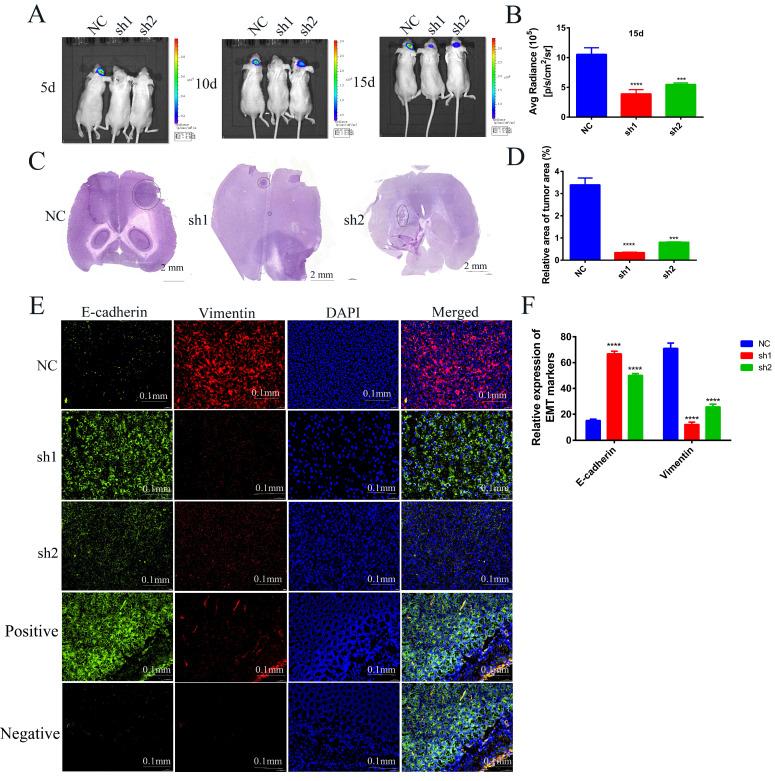Glioblastoma multiforme is a common malignant tumor of the central nervous system and one of the diseases that seriously threatens human health. Due to the rapid proliferation, migration, and invasion of glioma cells, as well as their ability to stimulate angiogenesis, gliomas grow in an aggressive and expansile manner and subsequently progress to higher grades. The current standard treatment for patients with glioma is surgical resection, followed by radiation therapy and adjuvant chemotherapy.
Glioblastoma (GBM) is the highest grade of glioma, accounting for more than half of all gliomas, and is essentially incurable. Due to treatment resistance and tumor recurrence, efforts have been made to identify the molecules that regulate the development and progression of GBM. These molecules play important roles in regulating GBM migration and invasion and may serve as key therapeutic targets. Therefore, it is necessary to identify therapeutic target molecules that regulate the development of GBM, provide additional treatments for glioma patients, and develop effective targeted molecular therapies.
Recently, researchers from China published an article titled "SEECTM1 promotes the development of glioblastoma and mesenchymal transition by regulating the TGFβ1/Smad signaling pathway" in the journal Int. J. Biol. Sci. This study reveals that SECTM1 promotes glioblastoma development and mesenchymal transformation by regulating the TGF-β1/Smad signaling pathway.
Secreted transmembrane protein 1 (SECTM1) is a gene encoding a transmembrane protein. The role of SECTM1 in glioblastoma (GBM) is unclear. This study reports for the first time the abnormal expression of SECTM1 in GBM, and studies the role and mechanism of SECTM1 in GBM.
| Cat.No. | Product Name | Price |
|---|---|---|
| CSC-DC013962 | Panoply™ Human SECTM1 Knockdown Stable Cell Line | Inquiry |
| CSC-RT2149 | Human SECTM1 Knockout Cell Line-A549 | Inquiry |
| CSC-SC013962 | Panoply™ Human SECTM1 Over-expressing Stable Cell Line | Inquiry |
| AD14398Z | Human SECTM1 adenoviral particles | Inquiry |
| LV24936L | human SECTM1 (NM_003004) lentivirus particles | Inquiry |
| CLOE-0630 | Human SECTM1 HEK293 Cell Lysate | Inquiry |
| CDCR284618 | Human SECTM1 ORF Clone(NM_003004.2) | Inquiry |
| CDCS411094 | Human SECTM1 ORF Clone (BC017716) | Inquiry |
| CDFH017146 | Human SECTM1 cDNA Clone(NM_003004.2) | Inquiry |
| CDFR002773 | Rat Sectm1 cDNA Clone(NM_001013043.1) | Inquiry |
| MiUTR1H-09237 | SECTM1 miRNA 3'UTR clone | Inquiry |
| MiUTR1R-07243 | SECTM1 miRNA 3'UTR clone | Inquiry |
| CDFR015199 | Rat Sectm1b cDNA Clone(NM_199082.2) | Inquiry |
| MiUTR1M-10517 | SECTM1B miRNA 3'UTR clone | Inquiry |
The researchers used qRT-PCR, Western blotting and immunofluorescence methods to detect the expression of SECTM1 in different grades of glioma and GBM cell lines. After knockdown of SECTM1 in cell lines with shRNA, the role of SECTM1 in GBM cell lines was verified through CCK-8, Transwell, EdU and wound healing experiments. The researchers further studied the effects and mechanisms of SECTM1 on GBM in vitro and in vivo. The effect of SECTM1 on glioma growth was tested by subcutaneous tumor xenografts in nude mice.
The results show that knockdown of SECTM1 in cell lines can significantly inhibit the proliferation, migration and invasion of GBM cells, while inhibiting the progression of subcutaneous xenograft tumors in nude mice. However, the role and molecular mechanism of SECTM1 in GBM are unclear. SECTM1 was found to promote epithelial-to-mesenchymal transition (EMT)-like processes in GBM. Bioinformatics analysis and Western blotting showed that SECTM1 mainly regulates glioblastoma invasion and EMT-like processes through the TGF-β1/Smad signaling pathway.

Figure 1. Effects of knockdown of SECTM1 in U87 MG on in situ tumorigenesis in mice. (Yao Z, et al., 2024)
In summary, this study found that SECTM1 is highly expressed in glioma and is associated with survival and poor prognosis of GBM. After SECTM1 knockdown, the expression of TGF-β1 and TGF-β R2 is down-regulated in GBM cell lines, and the TGF-β1/Smad signaling pathway is inhibited, thereby inhibiting the proliferation, migration, invasion and EMT-like processes of GBM. Interfering with the expression of SECTM1 can prevent GBM recurrence or chemotherapy resistance, so SECTM1 may be a promising target for GBM treatment.
Reference
Yao Z, et al. SECTM1 promotes the development of glioblastoma and mesenchymal transition by regulating the TGFβ1/Smad signaling pathway. International Journal of Biological Sciences, 2024, 20(1): 78.

